How to remove MINIBIKE malware from infected computers
![]() Written by Tomas Meskauskas on
Written by Tomas Meskauskas on
What kind of malware is MINIBIKE?
MINIBIKE is a sophisticated backdoor malware crafted in C++, featuring a suite of functionalities such as file exfiltration, command execution, and communication with cloud infrastructure. Upon infiltration, it grants cybercriminals unauthorized access to compromised computers.

More about MINIBIKE
MINIBIKE's primary capability lies in serving as a backdoor, providing unauthorized access to compromised devices. This access enables threat actors to execute commands remotely, exfiltrate sensitive files from the victim's system, and upload additional malicious payloads as needed.
Moreover, MINIBIKE is designed to establish communication channels with Azure cloud infrastructure, facilitating data transfer and command-and-control operations. One of the notable features of MINIBIKE is its ability to execute a launcher through search order hijacking (SoH).
This technique allows the malware to evade detection by executing its payload through legitimate processes or services, making it harder to identify and mitigate. Additionally, MINIBIKE employs deceptive tactics by masquerading as either a legitimate or fake executable, further complicating its detection by security software.
MINIBIKE's modular design enables it to adapt to various environments and evade traditional security measures. Its components, including the backdoor file, launcher, and disguised executable, work in tandem to provide stealthy and persistent access to compromised systems.
This flexibility allows the malware to remain undetected for extended periods, maximizing its effectiveness in carrying out malicious activities while minimizing the risk of detection and removal.
From the victim's perspective, possible damages from the MINIBIKE include loss of sensitive data, financial losses due to theft or fraud, compromised system integrity leading to system instability or malfunction, additional infections, and potential damage to the victim's reputation or business operations.
| Name | MINIBIKE backdoor |
| Threat Type | Backdoor |
| Detection Names | Avast (Win32:TrojanX-gen [Trj]), Combo Cleaner (Gen:Variant.Fragtor.353281), ESET-NOD32 (A Variant Of Win32/Kimsuky.BX), Kaspersky (UDS:Trojan.Win32.Kimsuky.gen), Symantec (Trojan Horse), Full List (VirusTotal) |
| Symptoms | Backdoor malware is designed to stealthily infiltrate the victim's computer and remain silent, and thus no particular symptoms are clearly visible on an infected machine. |
| Distribution methods | Infected email attachments, social media, malicious online advertisements, social engineering, software 'cracks'. |
| Damage | Stolen passwords and banking information, identity theft, the victim's computer added to a botnet, additional infections, monetary loss, and more. |
| Malware Removal (Windows) | To eliminate possible malware infections, scan your computer with legitimate antivirus software. Our security researchers recommend using Combo Cleaner. |
Conclusion
Overall, the MINIBIKE Malware poses a significant threat to cybersecurity, leveraging sophisticated techniques to compromise systems and exfiltrate sensitive data. Its multifaceted functionalities and evasion tactics make it a formidable adversary for security professionals, underscoring the importance of robust cybersecurity measures and proactive threat detection strategies in mitigating the risks posed by advanced malware threats like MINIBIKE.
How did MINIBIKE infiltrate my computer?
Cybercriminals trick users into infecting computers with MINIBIKE by creating a fake recruiting website that looks legitimate but actually contains malware. They spread this website through social media and emails, often disguised as job offers in tech or defense-related positions.
When unsuspecting users visit the website or open the contents of malicious emails, they unknowingly download the MINIBIKE malware onto their devices. Other common methods used to distribute malware include infected USB drives or other removable media and vulnerabilities in software or operating systems.
Additionally, malware can be distributed through social engineering tactics, such as enticing users to click on fake advertisements or download seemingly harmless files from untrustworthy sources (e.g., P2P networks and third-party downloaders). Pirated software, key generators, and cracking tools are also used to deploy malware.
How to avoid installation of malware?
Be careful when browsing the internet and engaging with emails. Be cautious of suspicious emails, particularly those from unfamiliar senders or with unexpected attachments or links. Stick to downloading software and files from trusted sources, and ensure your operating system and applications are regularly updated.
Use robust antivirus or anti-malware software and regularly scan your computer for threats. Finally, do not trust ads, pop-ups, and similar content on suspicious websites, and avoid downloading pirated software (or cracking tools).
If you believe that your computer is already infected, we recommend running a scan with Combo Cleaner Antivirus for Windows to automatically eliminate infiltrated malware.
Fake job descriptions used during the distribution of MINIBIKE:
Instant automatic malware removal:
Manual threat removal might be a lengthy and complicated process that requires advanced IT skills. Combo Cleaner is a professional automatic malware removal tool that is recommended to get rid of malware. Download it by clicking the button below:
▼ DOWNLOAD Combo Cleaner
By downloading any software listed on this website you agree to our Privacy Policy and Terms of Use. To use full-featured product, you have to purchase a license for Combo Cleaner. 7 days free trial available. Combo Cleaner is owned and operated by Rcs Lt, the parent company of PCRisk.com read more.
Quick menu:
- What is MINIBIKE?
- STEP 1. Manual removal of MINIBIKE malware.
- STEP 2. Check if your computer is clean.
How to remove malware manually?
Manual malware removal is a complicated task - usually it is best to allow antivirus or anti-malware programs to do this automatically. To remove this malware we recommend using Combo Cleaner Antivirus for Windows.
If you wish to remove malware manually, the first step is to identify the name of the malware that you are trying to remove. Here is an example of a suspicious program running on a user's computer:
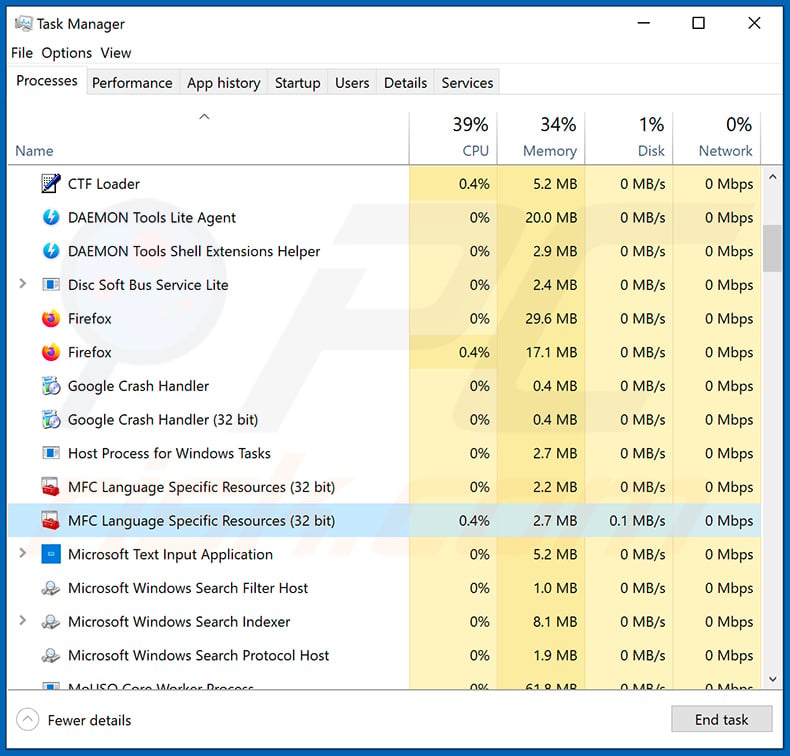
If you checked the list of programs running on your computer, for example, using task manager, and identified a program that looks suspicious, you should continue with these steps:
 Download a program called Autoruns. This program shows auto-start applications, Registry, and file system locations:
Download a program called Autoruns. This program shows auto-start applications, Registry, and file system locations:
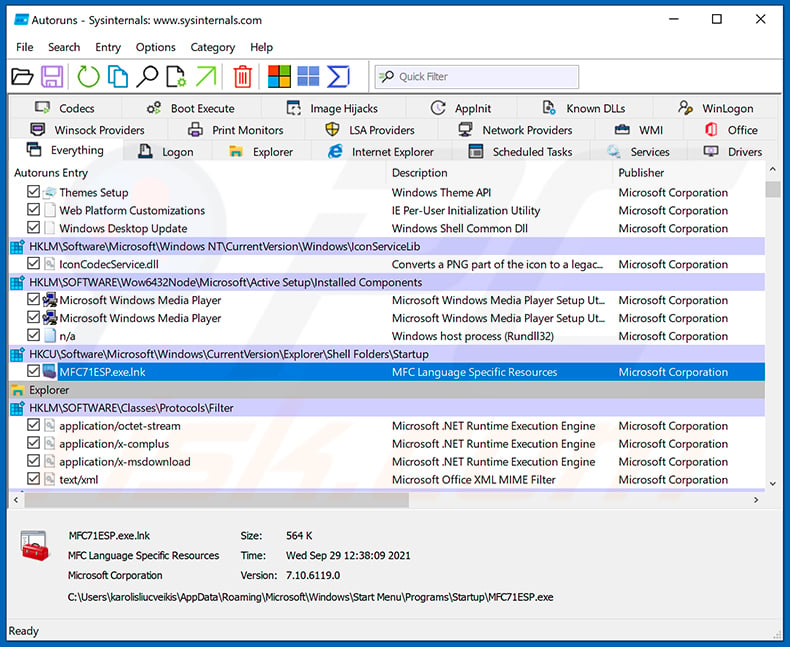
 Restart your computer into Safe Mode:
Restart your computer into Safe Mode:
Windows XP and Windows 7 users: Start your computer in Safe Mode. Click Start, click Shut Down, click Restart, click OK. During your computer start process, press the F8 key on your keyboard multiple times until you see the Windows Advanced Option menu, and then select Safe Mode with Networking from the list.
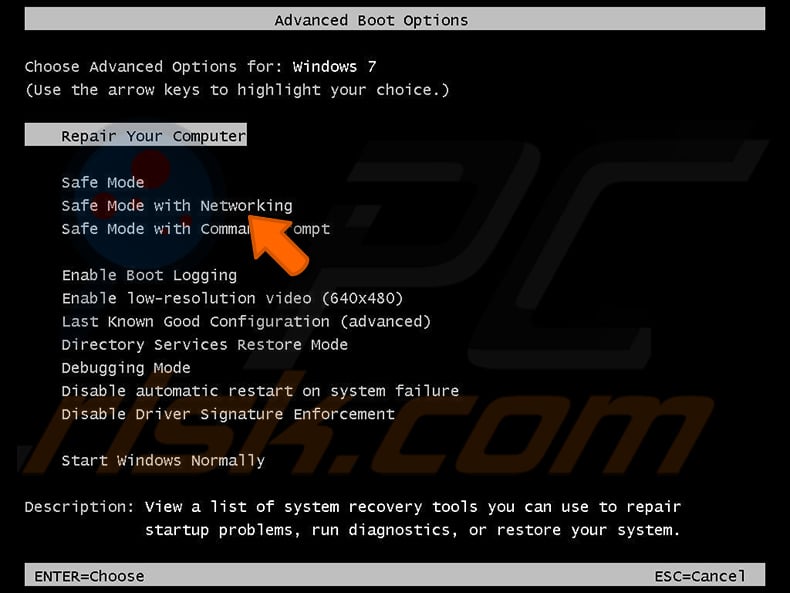
Video showing how to start Windows 7 in "Safe Mode with Networking":
Windows 8 users: Start Windows 8 is Safe Mode with Networking - Go to Windows 8 Start Screen, type Advanced, in the search results select Settings. Click Advanced startup options, in the opened "General PC Settings" window, select Advanced startup.
Click the "Restart now" button. Your computer will now restart into the "Advanced Startup options menu". Click the "Troubleshoot" button, and then click the "Advanced options" button. In the advanced option screen, click "Startup settings".
Click the "Restart" button. Your PC will restart into the Startup Settings screen. Press F5 to boot in Safe Mode with Networking.
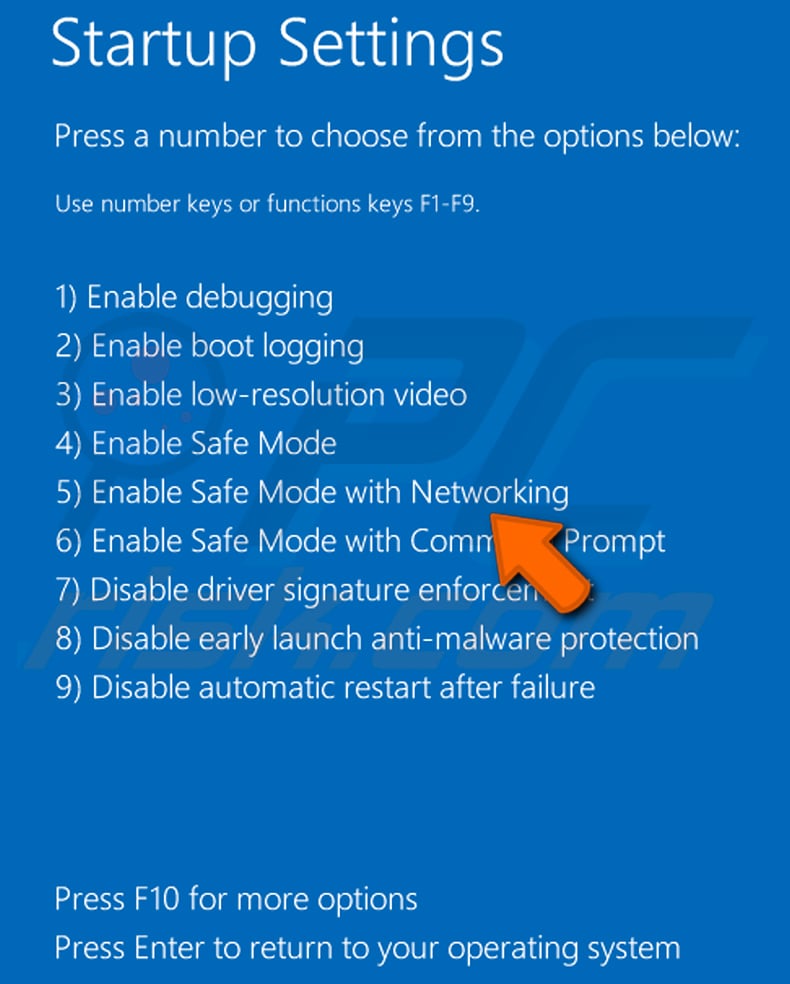
Video showing how to start Windows 8 in "Safe Mode with Networking":
Windows 10 users: Click the Windows logo and select the Power icon. In the opened menu click "Restart" while holding "Shift" button on your keyboard. In the "choose an option" window click on the "Troubleshoot", next select "Advanced options".
In the advanced options menu select "Startup Settings" and click on the "Restart" button. In the following window you should click the "F5" button on your keyboard. This will restart your operating system in safe mode with networking.
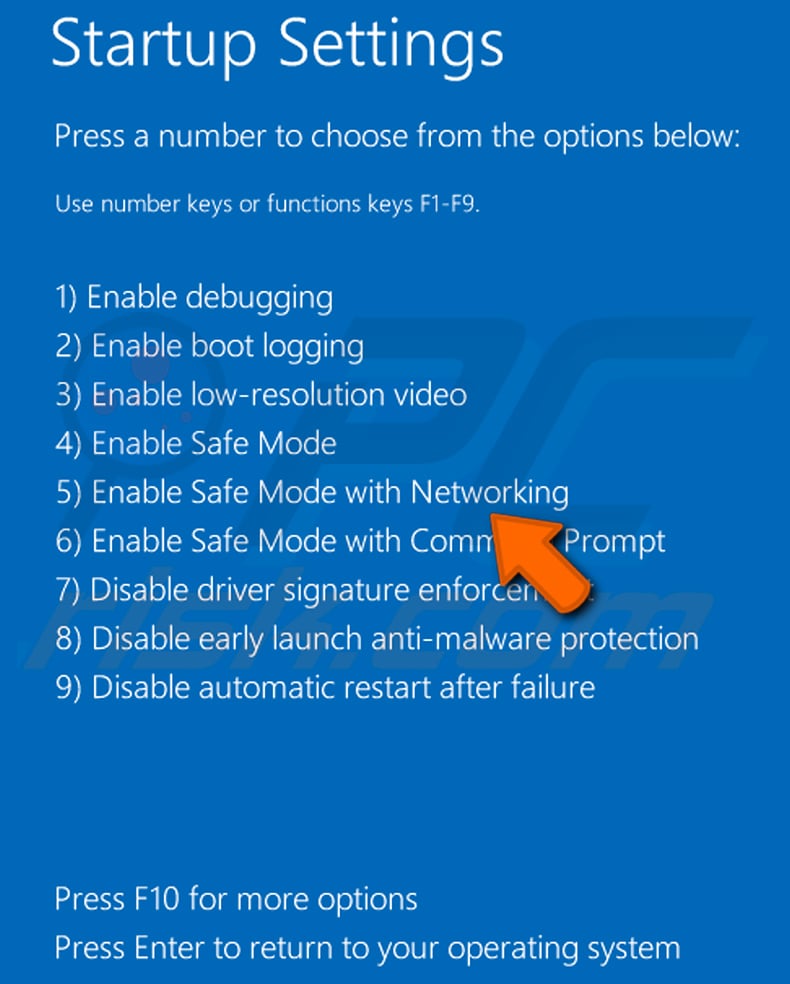
Video showing how to start Windows 10 in "Safe Mode with Networking":
 Extract the downloaded archive and run the Autoruns.exe file.
Extract the downloaded archive and run the Autoruns.exe file.
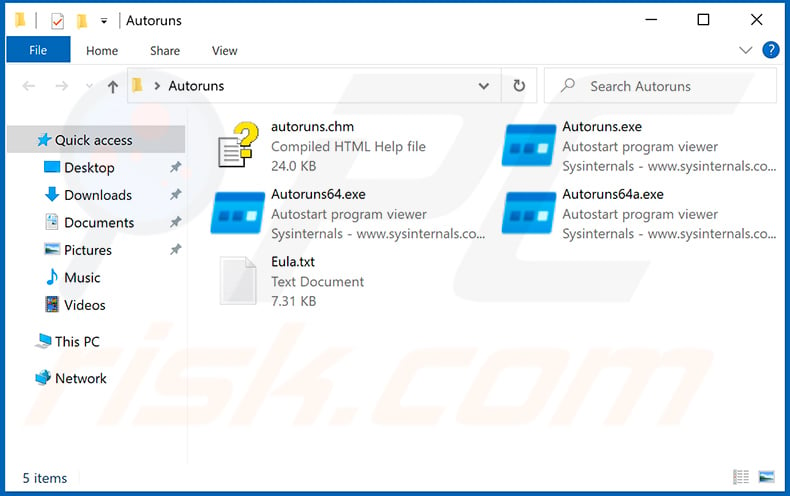
 In the Autoruns application, click "Options" at the top and uncheck "Hide Empty Locations" and "Hide Windows Entries" options. After this procedure, click the "Refresh" icon.
In the Autoruns application, click "Options" at the top and uncheck "Hide Empty Locations" and "Hide Windows Entries" options. After this procedure, click the "Refresh" icon.
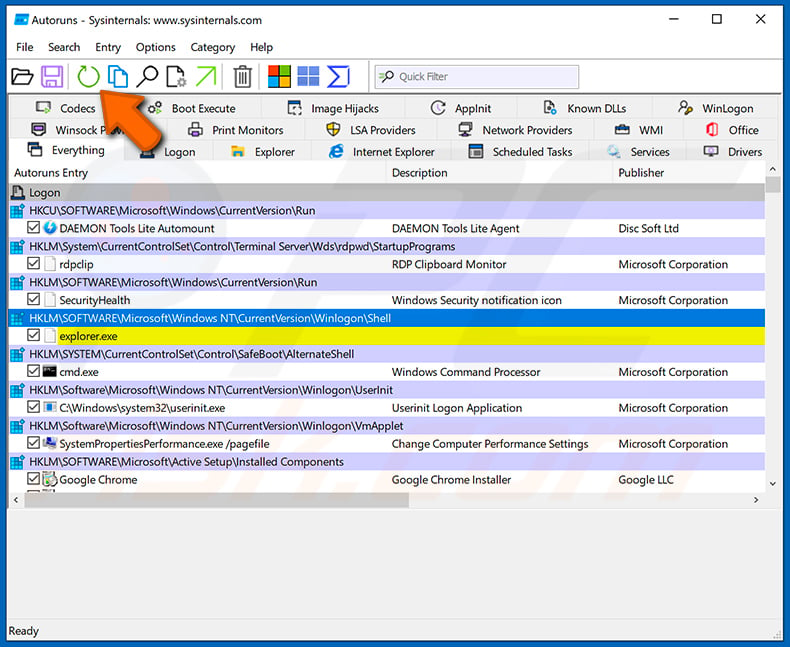
 Check the list provided by the Autoruns application and locate the malware file that you want to eliminate.
Check the list provided by the Autoruns application and locate the malware file that you want to eliminate.
You should write down its full path and name. Note that some malware hides process names under legitimate Windows process names. At this stage, it is very important to avoid removing system files. After you locate the suspicious program you wish to remove, right click your mouse over its name and choose "Delete".
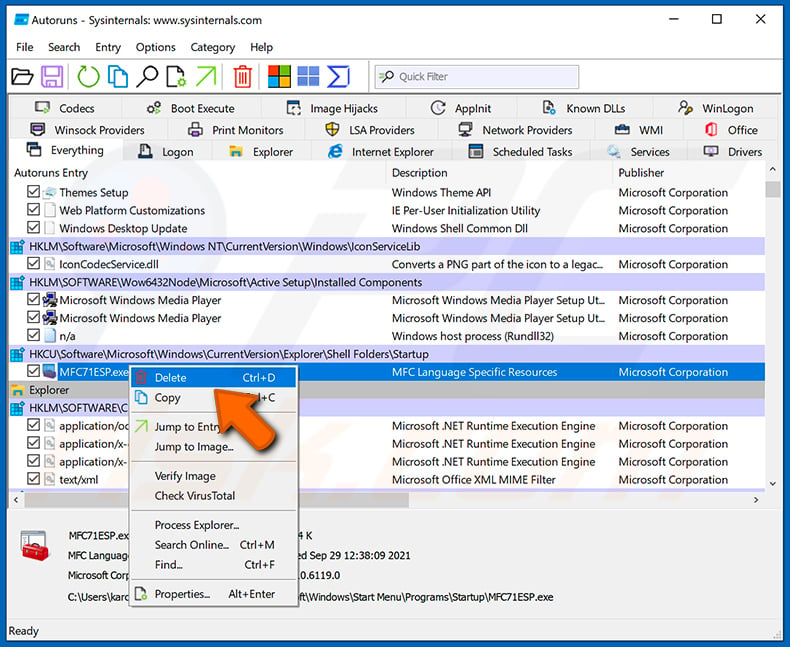
After removing the malware through the Autoruns application (this ensures that the malware will not run automatically on the next system startup), you should search for the malware name on your computer. Be sure to enable hidden files and folders before proceeding. If you find the filename of the malware, be sure to remove it.
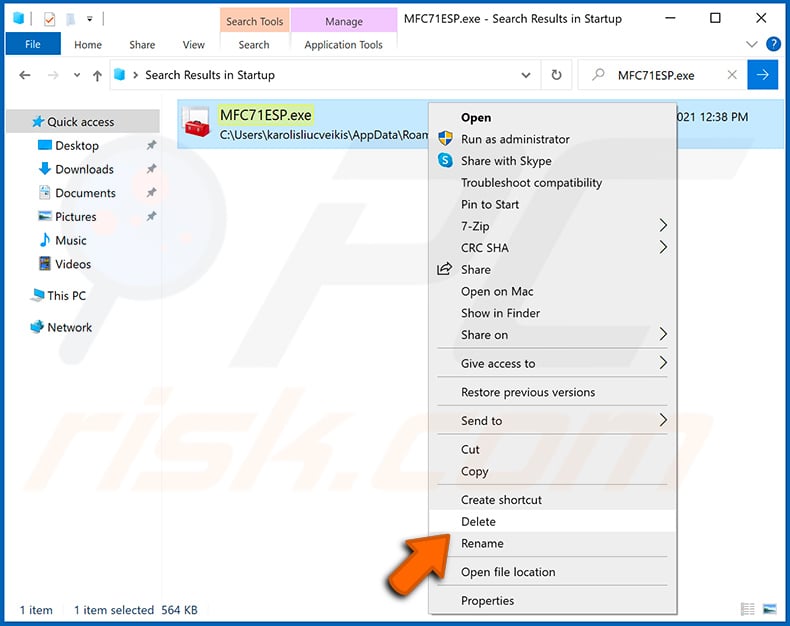
Reboot your computer in normal mode. Following these steps should remove any malware from your computer. Note that manual threat removal requires advanced computer skills. If you do not have these skills, leave malware removal to antivirus and anti-malware programs.
These steps might not work with advanced malware infections. As always it is best to prevent infection than try to remove malware later. To keep your computer safe, install the latest operating system updates and use antivirus software. To be sure your computer is free of malware infections, we recommend scanning it with Combo Cleaner Antivirus for Windows.
Frequently Asked Questions (FAQ)
My computer is infected with MINIBIKE malware, should I format my storage device to get rid of it?
If your computer is infected with the MINIBIKE malware, formatting your storage device may not be necessary or recommended as a first step. Instead, try using reputable antivirus or anti-malware software to scan and remove the MINIBIKE malware from your computer.
What are the biggest issues that malware can cause?
The biggest issues that malware can cause include data theft, system damage, financial losses, data encryption, additional infections, and compromised privacy.
What is the purpose MINIBIKE?
The purpose of the MINIBIKE malware is to provide cybercriminals with unauthorized access to compromised devices, allowing them to execute commands remotely, exfiltrate sensitive data, and carry out other malicious activities.
How did MINIBIKE infiltrate my computer?
MINIBIKE has likely infiltrated your computer through a fake recruiting website spread via social media and emails posing as job offers. Users unknowingly download the malware when they visit the site or open files within received malicious emails.
Will Combo Cleaner protect me from malware?
Certainly, Combo Cleaner can detect and remove nearly all malware. It is important to note that sophisticated malware can be hiding deep. Therefore, conducting a full system scan is essential for thorough detection and removal.
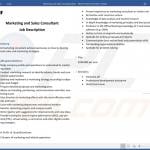
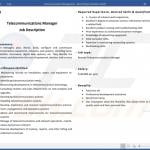
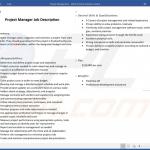


▼ Show Discussion